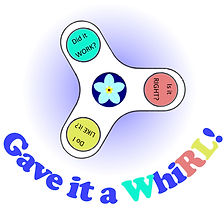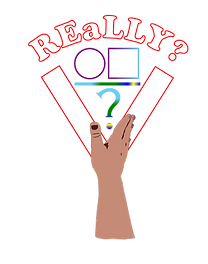THE THOUGHTFUL THINKER
CONSIDER - CONSIDERED - CONSIDERATE
CONSIDER
To succeed in life, it’s not enough to blunder through. You might get the job done, but how well? At Got-A-Head®?, we believe that it’s vital to encourage everyone to consider what they are doing at every stage. ‘Stop! Think!’ should be the first phase of any activity.
To maximise your results, you should be considering which tools, techniques or strategies from the Thinking Toolkit will be of most benefit to a particular task or activity. Do you have a question you need to analyse and plan how to answer, when you should be reaching for REaLLY? Maybe it’s a creative task, where QWERTY® would be your go-to technique. It can also help with problem-solving or lateral thinking. There’s the extension of that, the QWERTY® Hub, which helps marry design elements with rich content. Or, it could be a matter of identifying which Forget-Me-Nots could be used to best effect to enhance what you will be doing.

"Words will not fail when the matter is well considered."
Horace

By engaging in thought before action, it may take a bit more time before you start, but once you do, you’ll be more efficient in the task and more effective in what you achieve.
You should consider the task:
-
before you start, engaging your memory as much as possible, to prime your brain so that you will work as efficiently and effectively as possible, right from the beginning.
-
as you go along, looking for ways to enhance your output using tools such as GULL (work that is Grammatical, Understandable, Legible and Lucid) and ACES (Assess, Construct, Enhance, Select).
-
at the end of major stages, to check you are where you need to be (Keep on Track) and that you are meeting any requirements (REaLLY?) or deadlines.
CONSIDERED
Tasks should be well-thought-out.
That’s not to say that there isn’t still scope for spur of the moment decisions or improvisations. They’ll be sparked, we hope, by ideas you’ve had already, or memories you’ve mined, and allowed to flicker to life in the open-minded approach we encourage. However, they should be considered in detail to make sure they fit with the overall plan you have in mind.


The work you’ve done needs to be considered at the very end of the test or task, to evaluate its quality (both the product and the process). Have you done everything that was needed? Did you do it the best way? You can use tools like REF and Gave-it-a WhiRL! to check your work is the best it can be and think about what you could do to improve it or to optimise the way you would do something similar next time. What can you learn from what you’ve done to use it in future (Wrap and Remember)? How could what you’ve done be incorporated into other tasks or projects (Chain Reaction)?
In particular, the ’Y’ of REaLLY? and ‘YaY!’ of QWERTY® remind you of the need to evaluate and review so you can learn for the future. There should be a virtuous circle of continuous improvement.
CONSIDERATE
Part of your thinking should be about the ethical element of what you are doing. Is it right? (Give-it-a-WhiRL!) How will what you are doing impact on others, or the world we live in? Are there legal or moral implications that you should be considering? We want to encourage a cooperative approach, where all ideas are considered, whatever their source, and everyone is listened to. We can achieve more by working together and learning from each other.

%20reduced.jpg)